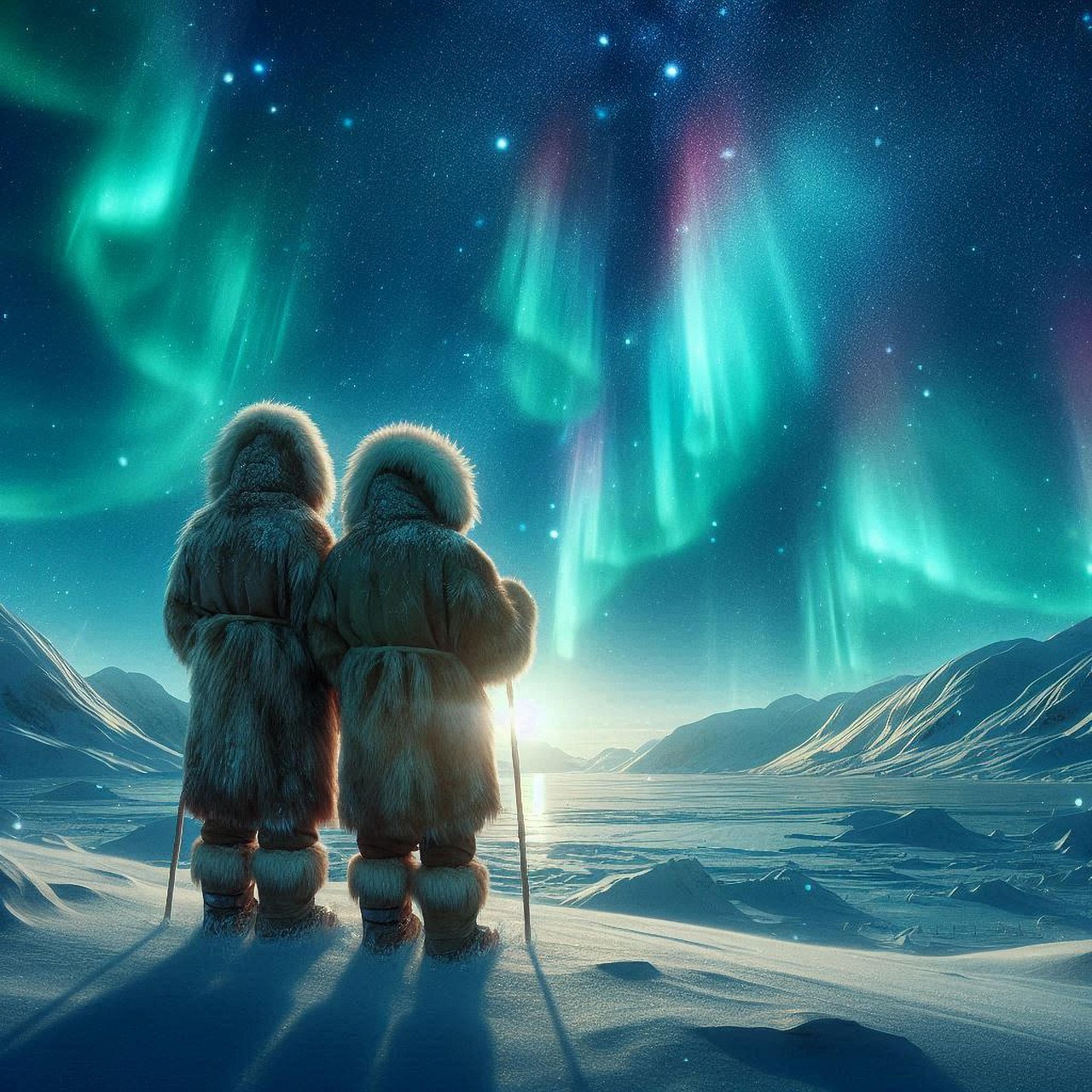When Stories Help to Survive
Imagine a world of endless ice and frozen silence. Temperatures dropping as low as -50°C, months of darkness in winter, and a landscape that at first glance seems hostile to life. In such an environment, stories are not just entertainment – they are survival manuals, knowledge archives, and a link to the invisible world. The oral traditions of the Inuit, passed down through millennia, are an impressive testimony to this unique way of life.
More Than Just Stories: The Role of Oral History
Inuit Oral History was the foundation of their society. In a culture without a written language, the oral transmission of knowledge was not for mere entertainment, but for sheer survival. Each story contained practical information:
- Weather signs and forecasts
- Hunting techniques for seals, whales, and caribou
- Recognizing dangerous ice conditions
- Navigation by the stars
- Behavior towards wild animals
- Social rules and taboos
This traditional Inuit knowledge was memorized through mythological tales – a brilliant mnemonic technique that ensured vital information was passed from generation to generation.
The Gods and Spirits of Inuit Mythology
The spiritual world of the Inuit is rich in deities and spirits that permeated daily life. Unlike many other mythologies, the Inuit have no strict hierarchy, but rather a complex web of forces.
Sedna – The Powerful Goddess of the Sea
The legend of Sedna is one of the most important Inuit myths. Sedna, also known as Nuliajuk or Arnapkapfaaluk, rules over the sea animals and thus controls the fate of the hunters.
Her story varies regionally, but a widespread version tells of a young girl who is seduced by a strange bird-man and taken to a distant island. When her father comes to rescue her, the enraged bird-man casts a curse that stirs the sea. In mortal fear, the father throws his daughter overboard. As she clings to the boat, he chops off her fingers, which transform into seals, whales, and other sea creatures. Sedna sinks to the ocean floor, where she reigns as ruler of the marine world.
This story of Sedna not only explains the origin of sea animals but also teaches respect for the ocean and its creatures. When hunters remained unsuccessful, the Inuit believed Sedna was angry, and a shaman had to descend to comb her hair and appease her.
Sila – The Spirit of Sky and Air
Sila is a complex concept in Inuit mythology – less a personal deity than an impersonal, all-encompassing force representing weather, air, and the intelligence of nature. Sila is both consciousness and life force.
The Raven (Tulugaq) – Trickster and Creator
As in many Indigenous cultures of North America, the raven plays an important role in Inuit traditions as a trickster figure. In some creation myths, Tulugaq brings light into the world or shapes the landscape through his cunning and curiosity.
Lessons from the Ice: How Myths Secured Survival
The seemingly fantastic stories had concrete life-sustaining functions. The tales were pedagogical tools that conveyed ecological knowledge in a memorable way.
- Resource management: The Sedna legend taught sustainable hunting. If too many animals were killed or disrespected, the goddess punished the community with hunger.
- Child safety: Stories about Qallupilluk (water-dwelling spirits) warned children not to go too close to dangerous ice edges or icy waters.
- Social cohesion: Taboo stories strengthened social norms and ensured the survival of the group under extreme conditions.
The Legend of the Northern Lights (Aurora Borealis)
The fascinating phenomenon of the aurora borealis has several explanations in Inuit mythology. One widely known legend says that the lights are the spirits of the dead playing “football” in the sky with walrus skulls or torches. Another version tells that the dead use torches to guide the living. Children were warned not to look at the lights for too long or whistle, as the spirits might descend and take them away.
The Continuation of Oral Tradition Today
Despite modernization and Christian missionization, Inuit traditions remain alive. Elders pass down knowledge, artists integrate the motifs into their works, and young Inuit rediscover their cultural heritage. The recognition of this unique knowledge system as UNESCO World Heritage emphasizes its global value.
Conclusion: Timeless Wisdom for Modern Challenges
The oral traditions of the Inuit are more than folkloric curiosities – they contain deep ecological wisdoms that are more relevant than ever in times of climate change. They teach respect for nature, sustainability, and the importance of community-oriented action. This oral heritage not only preserves Inuit culture but also offers valuable insights for all of humanity.
Sources and Further Reading:
· Inuit Tapiriit Kanatami: National Inuit Organization in Canada
· Canadian Museum of History: Extensive collection on Inuit culture
· Avataq Cultural Institute: Documentation and preservation of Inuit heritage

